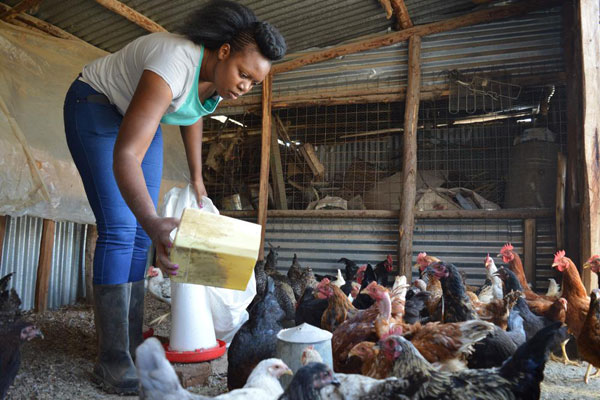Challenges and successes in farming: For Mixa Foods and Beverages to be the profitable business that it is now, Herrine Omenda had to nurture the crops on her farm as much as she did her five-year-old daughter.
Barren virgin land along the little known Nyamasaria River in Kisumu County, capital of Sh70,000 to buy a fuel-powered pump and a few seedlings marked the start of her life as a farmer. Herrine recalls her modest beginnings:
“It was just one acre of land, a pump, a sprinkler, pipes… It was hard and I had to be patient.”
Like many women, Herrine’s first challenge was that she did not have land for farming. But when she saw the land by the river, despite the fact that it was notoriously hard-to-farm black cotton soil, she was sold.
“I saw the water, and I thought ‘I can farm the whole year even with little rain’. And food has never been an out-of-season product”
she says. She approached the owners on whether she could lease it. Baffled at why anyone would want such an unattractive piece of land, the owners asked her for Sh6,000 a year, or just Sh500 a month.
Then she went about setting her company up.
“There was the company whose name my husband conceived when he was in college. I think he did not know what to do with it until we started farming.”
Once everything was set up, she started grafting ordinary resilient mango and orange breeds with shorter life spans. The process of getting the seeds for the grafting was galling, but she did not mind.
“I used to go to the market and collect the seeds people dropped after eating mangoes. These are what I planted to get the indigenous seeds that would later be grafted,”
she says. The Sh200 orange and Sh150 mango seedlings fetched her about Sh10,000 in gross sales every week at the local market.
The process of grafting is as sensitive as it is laborious.
“When the seeds have germinated, you uproot them, put them the black bags then make small incisions that you will later graft better breeds of the plant, then begin watching the plant until it grows.”
By 2009, she had earned enough to expand to three acres and buy the land. With more space, Herrine established an orchard where she planted peas, apples, sugarcane and mangoes.
Value addition
But there was another challenge that was threatening her growth: produce from neighbouring Uganda.
“The traders who would get their products from there would sell them at a very low prices compared to my products,”
she says. Customers who knew the detail, care and dedication with which she grew her crops with still came to her, but Herrine still needed to figure out how to beat the competition.
Profits and challenges of greenhouse farming in Kenya
One day, the solution hit her: Value addition. Being married to an engineer who made kitchen equipment such as potato choppers, she decided to induct him into her scheme. He made her a sugar cane crusher with which she started making sugarcane juice that was in demand from people with jaundice, a medical condition marked by yellowing of the skin or whiteness in the eyes.
The results were encouraging.
“When I sold the sugarcane as a processed product I earned twice as much from it than I did while it was umprocessed,”
she says. As income rose to as much as Sh90,000 a month on selling just one of her products, Herrine handed over management responsibilities to her husband as she enrolled for evening accounting classes.
Another challenge Herrine faced as a woman farmer was to learn to steel herself against naysayers and chauvinists.
“Sometimes I walk into supermarkets and other companies when I am marketing my goods and people look at me and ask ‘are you a farmer?’ in a way that shows me they are not really looking for an answer to that question.”

